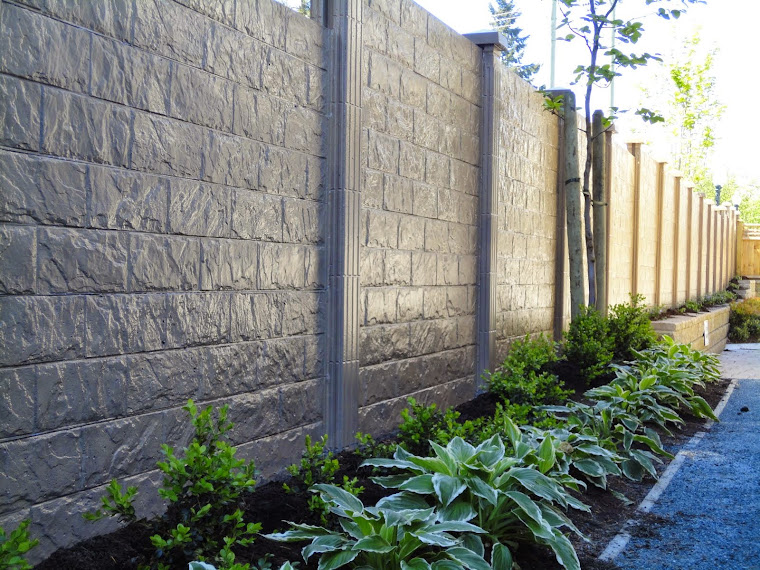Do
you live in a noisy neighborhood? Concrete sound barriers could be your
solution to peace and quiet.
It is about time to turn down the volume!
Noise pollution has been a major concern of health deterioration due to
restlessness and sleeplessness. We should not have to compromise our quality of
life to bear with our noisy neighbors. Whether you live near a school zone,
construction site, high traffic area, or any areas with excessive noise,
concrete sound walls are the most effective methods of cutting down the noise!
By reading this article you will understand what you can do to reduce the level
of intrusive noise entering your home.
To begin, let’s understand the nature of
sound waves. Sound waves are very similar to water, as it would bounce off
objects and flow through holes. For instance, sound waves from cars zipping
pass your home would bounce off your drive way and flow through the window that
you have opened in your living room. However, unlike water, sound waves can
also pass through objects that are thin and uncompressed. This means, even if
you had closed your window, sound waves, that are strong enough, could also
pass through your drywalls and enter your home without an invitation! We
recommend using dense objects materials such as concrete to absorb or reflect
sound from entering your home. Another rule to remember how sound waves travel
is the “line of sight”. If the source creating the sound is in your sight, then
you’ll be able to hear it! This means if you live on a hill, you may want to
build a taller wall!
An important factor to look at is sound
wave intensity, which is measured in decibels. The loudness of sound generally doubles when sound is increased by 10
dB. According to Harvard Medical School Health Letter, studies have shown
prolonged exposure to 85 or more decibels can cause permanent hearing loss. More
importantly, physiological damage can also occur at lower levels! The following
chart retrieved from http://wordinfo.info/unit/620/ip:1/il:D
illustrates the intensity of sound at factors of 10 dB:
0 – 1 dB
|
Faintest sound that can be heard
|
30 dB
|
Quiet conversation, soft whisper,
quiet suburb
|
40 dB
|
Many computer hard drives range an
average of 40-50 dB, soft whisper [five feet]
|
50 dB
|
Light traffic at a distance of 100
feet
|
60 dB
|
Conversation at one meter, or average
street traffic at 100 feet
|
70 dB
|
TV, noisy restaurant [constant
exposure], busy traffic [at one meter]
|
80 dB
|
Heavy city traffic [25-50 feet], alarm
clock at two feet
|
90 dB
|
Pneumatic drill [or hammer] at one
meter
|
130 dB
|
Sound vibrations felt, thunder or near
a four-engine jet at thirty meters
|
140 dB
|
Gunshot blast, or jet plane take-off
at close range [approximately 200 feet]
|
Chart: Correlations of dB levels to
causality of noise.
 In Canada and the United States, the maximum
permitted noise exposures level for 8 hours are within 80 dB to 90 dB depending
on which province or state you live in. At 80 dB, heavy city traffic is one of
the most pervasive unwanted noises transmitted to residential homes! When noise
pollution hit your front lawn, precast concrete sound barriers may be an ideal
solution for noise abatement to your ears.
In Canada and the United States, the maximum
permitted noise exposures level for 8 hours are within 80 dB to 90 dB depending
on which province or state you live in. At 80 dB, heavy city traffic is one of
the most pervasive unwanted noises transmitted to residential homes! When noise
pollution hit your front lawn, precast concrete sound barriers may be an ideal
solution for noise abatement to your ears.
According to National Precast Concrete
Association, “concrete’s greater mass reduces sound penetrating through a wall
by more than 80% compared with wood or steel frame construction”. With this being said, precast concrete sound
barriers will surely provide you the peace and quiet that you’ve been aching
for. Finally, before you head out to build your precast concrete sound barriers
you may want to consider the following points:
-
* Understand where most intrusive
noise are coming from
-
* Decide on the level of decibels
reduction you want your sound barriers to have (not all walls provide equal
noise reduction)
-
* Understand the maximum
permissible height that you can build your sound barrier (ranges differently in
each province/state, check with your municipality)
-
* Determine the thickness of your
sound barrier (thickness usually equates with price)
-
* Determine the design your sound
barrier (some concrete walls have holes, which would not be ideal in reducing
noise level)
Sources:
http://wordinfo.info/unit/620/ip:1/il:D
http://www.thisoldhouse.com/toh/article/0,,1046429,00.html


